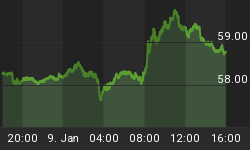7/22/2010 9:11:16 AM
Trade Recommendations:
Take no action.
Daily Trend Indications:

- Positions indicated as Green are Long positions and those indicated as Red are short positions.
- The State of the Market is used to determine how you should trade. A trending market can ignore support and resistance levels and maintain its direction longer than most traders think it will.
- The BIAS is used to determine how aggressive or defensive you should be with a position. If the BIAS is Bullish but the market is in a Trading state, you might enter a short trade to take advantage of a reversal off of resistance. The BIAS tells you to exit that trade on "weaker" signals than you might otherwise trade on as the market is predisposed to move in the direction of BIAS.
- At Risk is generally neutral represented by "-". When it is "Bullish" or "Bearish" it warns of a potential change in the BIAS.
- The Moving Averages are noted as they are important signposts used by the Chartists community in determining the relative health of the markets.
Current ETF positions are: In Cash.
Daily Trading Action
The major index ETFs opened significantly higher and immediately began to sell off. The opening minutes saw quite a slide which tapered some but continued into late morning. From there, the major indexes rose into early/mid-afternoon. A slide began anew as Ben Bernanke took was addressing members of Congress and that slide was even more dramatic than the morning slide. The final hour was spent making up a little of the lost ground but the major indexes finished not far off their lows. The Russell-2000 (IWM 61.24 -1.12) lost most of two percent on the day and the Semiconductor Index (SOX 351.13 -7.00) lost two percent on the day. Both continue to exhibit extreme volatility. The Bank Indexes remain in downtrend states and lost more proportional than the other equity indexes. The Bank Index (KBE 22.79 -0.49) lost 2.1% while the Regional Bank Index (KRE 22.21 -1.11) lost 4.8%! The 20+ Yr Bonds (TLT 102.03 +1.70) achieved a closing high not seen since the financial crisis was in its throws. Volume increased but remained below average with 1.200B shares traded on the NYSE. Similarly, NASDAQ share volume also increased modestly but remained average with 2.212B shares traded.
Aside from the weekly crude oil inventory report, there were no economic reports of interest released. The U.S. government reported that crude oil inventories rose 360K barrels since last week. The inventory report was released an hour into the equities trading session.
Again, the day was all about investor psychology. With the major indexes opening up more than one percent, market participants again took the idea that they would bring the market back toward the previous close and just kept selling when Federal Reserve Chairman Ben Bernanke didn't provide testimony that made them feel warm and cozy. It wasn't that Bernanke said anything specifically inflammatory, but rather the markets don't like uncertainty. Bernanke suggested that the Fed was exploring options as to what policies it might take if the economy continues to weaken. On further questioning, he expanded this to a short list which didn't seem to placate investors.
All ten economic sectors in the S&P-500 moved lower led by Financials (-1.8%).
The yield for the 10-year note was nearly unchanged as it fell two basis points to close at 2.91. The price of the near term futures contract for a barrel of crude oil fell $1.12 to close at $76.44. We note that this was affected by the small rise in crude oil inventories reported over last week's levels.
Market internals were negative with decliners leading advancers 2:1 on the NYSE and by 3:1 on the NASDAQ. Down volume led up volume 4:1 on the NYSE and by 5:1 on the NASDAQ. The index put/call ratio rose 0.24 to close at 1.78. The equity put/call ratio rose twelve basis points to close at 0.65.
Commentary:
Wednesday's trading action was what we expected as we said "to bet against whatever directional bias exists at the market open." The market on Thursday looks to open higher. We believe the bulls could get the upper hand here, but with a markedly higher open, the market could easily repeat its actions over the past week, which is to close in the opposite direction of the open. We note that, with the exception of the bank indexes, which look horribly bearish, the BIAS for each of the equity indexes we monitor is currently BEARISH but show a distinct likelihood that this could flip to BULLISH in the coming week. That would make us sing a different tune and we would want to get long after an initial correction. As it is, we will remain in cash another day to see if market participants can get onto the same page for a couple of days in a row.
We hope you have enjoyed this edition of the McMillan portfolio. You may send comments to mark@stockbarometer.com.















